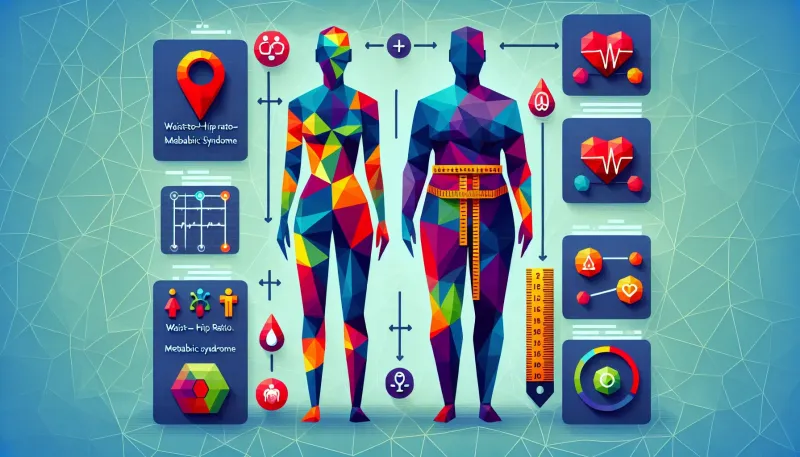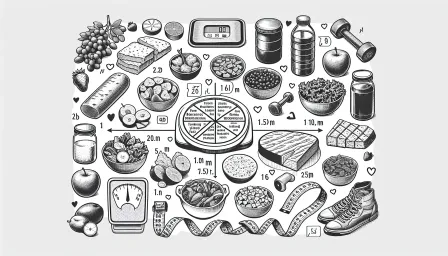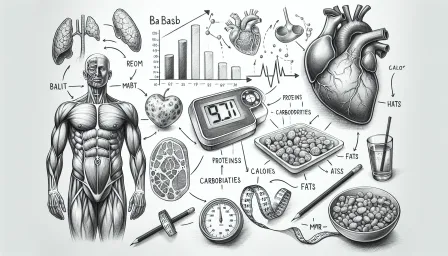Understanding the Connection Between Waist-to-Hip Ratio and Metabolic Syndrome

Discover the critical link between waist-to-hip ratio and metabolic syndrome, its implications for health, and how to manage risks effectively.
Metabolic syndrome is a cluster of conditions that increase the risk of heart disease, stroke, and diabetes. One emerging metric in understanding and managing metabolic syndrome is the waist-to-hip ratio (WHR). This article delves into the connection between waist-to-hip ratio and metabolic syndrome, offering a comprehensive guide grounded in research and authoritative insights.
The Waist-to-Hip Ratio: An Overview
The waist-to-hip ratio is a simple but powerful measurement that compares the circumference of the waist to that of the hips. It is calculated by dividing the waist measurement by the hip measurement. This metric provides insight into fat distribution in the body, distinguishing between apple-shaped (central obesity) and pear-shaped (general obesity) figures.
How to Measure Waist-to-Hip Ratio
To accurately measure the waist-to-hip ratio, follow these steps:
- Measure the Waist: Use a tape measure to find the narrowest part of the torso, usually just above the belly button.
- Measure the Hips: Locate the widest part of the hips and the buttocks for the hip circumference.
- Calculate the Ratio: Divide the waist measurement by the hip measurement.
Understanding Metabolic Syndrome
Metabolic syndrome is a health condition characterized by a combination of risk factors that can lead to cardiovascular diseases and diabetes. These factors include increased blood pressure, elevated blood sugar levels, excess body fat around the waist, and abnormal cholesterol or triglyceride levels.
Criteria for Diagnosing Metabolic Syndrome
The diagnosis of metabolic syndrome is typically based on having at least three of the following criteria:
- Waist circumference greater than 40 inches for men or 35 inches for women.
- Triglyceride levels of 150 mg/dL or higher.
- HDL cholesterol levels less than 40 mg/dL in men or 50 mg/dL in women.
- Blood pressure of 130/85 mmHg or higher.
- Fasting blood sugar level of 100 mg/dL or higher.
Link Between Waist-to-Hip Ratio and Metabolic Syndrome
Studies have shown a significant correlation between an elevated waist-to-hip ratio and the likelihood of developing metabolic syndrome. The central obesity indicator (high WHR) is closely associated with insulin resistance, hypertension, and lipid abnormalities.
Why Waist-to-Hip Ratio Matters
While Body Mass Index (BMI) has long been used as a standard metric for assessing obesity, it does not account for fat distribution. WHR, on the other hand, offers a clearer picture of visceral fat – the dangerous fat stored around the organs in the abdomen. Visceral fat is more metabolically active and thus more strongly linked to the risk factors that compose metabolic syndrome.
Managing Risks Associated with High Waist-to-Hip Ratio
Understanding your risk is the first step. Here’s how you can manage and mitigate the risks associated with a high WHR.
Maintaining a Healthy Diet
A diet rich in whole grains, fruits, vegetables, lean proteins, and healthy fats can help manage weight and improve overall metabolic health. Reducing intake of refined sugars, trans fats, and processed foods is also beneficial.
Regular Physical Activity
Engaging in regular physical activity, including both aerobic exercises and resistance training, can measurably reduce abdominal fat and improve insulin sensitivity.
Medical Interventions
In some cases, medical interventions such as medications to control blood pressure, cholesterol levels, and blood sugar might be necessary. Consult with a healthcare provider for personalized advice.
Behavioral Changes
Stress management techniques, adequate sleep, and avoiding smoking and excessive alcohol consumption are critical components in managing metabolic health.
Conclusion: The Imperative of Monitoring Waist-to-Hip Ratio
Waist-to-hip ratio serves as a crucial indicator of metabolic health, offering insights beyond traditional metrics like BMI. By understanding this relationship, individuals can take proactive measures to manage their health, reduce the risk of metabolic syndrome, and improve overall well-being.



























